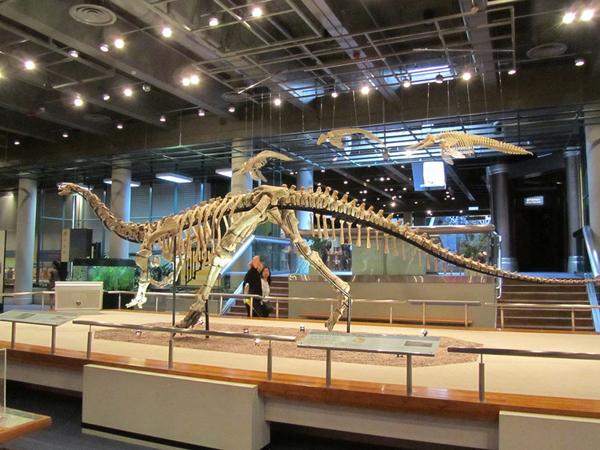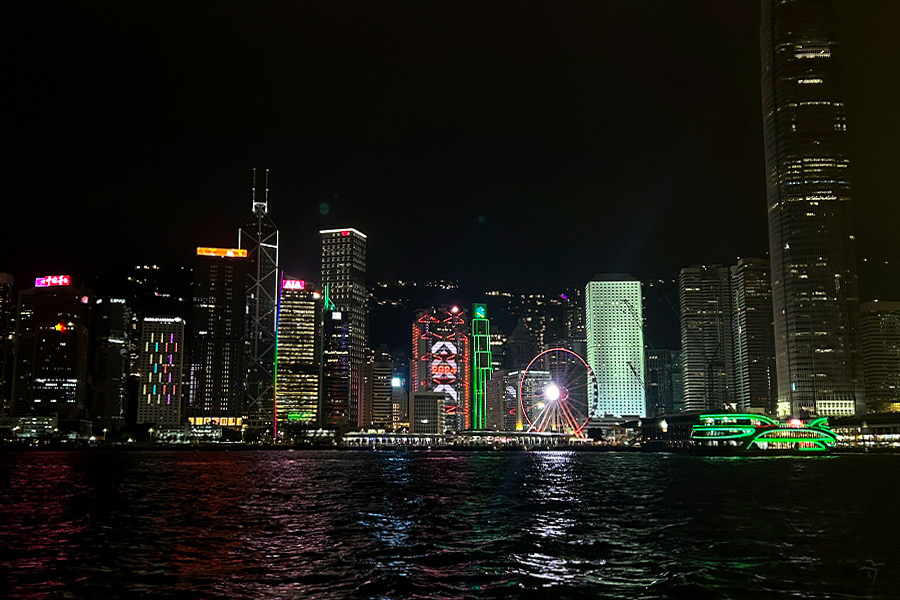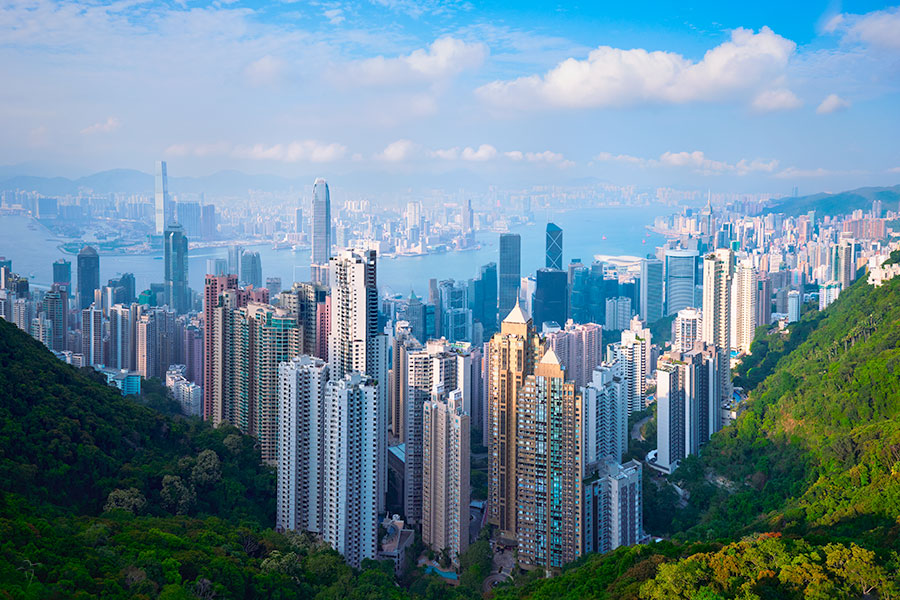Hong Kong Science Museum

Chinese name: 香港科學館
Location: No.2, Science Museum Road, Tsim Sha Tsui, Hong Kong.
Entrance fee: 25 HKD (standard ticket); 17.5 HKD (group ticket, for each purchase of 20 or more Standard Tickets).
Please note that tickets are available one hour before the opening time & not available one hour before closing time.
Opening time:
- 13:00-21:00 on Monday, Tuesday, Wednesday and Friday;
- 10:00-21:00 on Saturday, Sunday and public holidays;
- Opened until 17:00 on Eves of Chinese New Year and Christmas;
- Closed on Thursday (except public holidays), the first and second days of Chinese New Year.
How to get there:
1. Mass Transit Railway.
- Get out of Exit B2 of Tsim Sha Tsui Station, then walk along the Cameron Road in direction of eastern Tsim Sha Tsui for about 18 minutes.
- Get out of Exit D of Jordan Station, then walk along the Austin Road in direction of eastern Tsim Sha Tsui for about 20 minutes.
- Get out of exit of Hung Hum Station, then walk along the pedestrian bridge in direction of eastern Tsim Sha Tsui for about 15 minutes.
2. Bus.
- Take No. 5, 5C, 8, 8A, 13X, 26, 28, 35A, 41A, 81C, 87D, 98D, 110, 208, 215X, 219X, 224X, 269B, 260X of Kowloon Motor Bus, or No.A21 of Citybus.
- Tsim Sha Tsui (eastern) Bus Terminal: No.13X, 26, 35A, 41A, 98D, 208 of Kowloon Motor Bus, or No.973 of Citybus.
- Shuttle bus: No.7 or 8.
Brief Introduction to Hong Kong Science Museum
Adjacent to Hong Kong Museum of History, Hong Kong Science Museum located at eastern part of Tsim Sha Tsui was officially opened in 1992. The museum occupies a floor area of 13,500 square meters, with a permanent exhibition area of 6500 square meters where over 500 pieces of exhibits themed on science, including optics, acoustics, mechanics, magnetism and electricity, mathematics, life science, transportation, telecommunications, food science, energy, occupational safety and health, household science and technology, etc, are displayed. Of all the exhibits in the 16 halls, about 70% are allowed visitors at all ages to touch and operate to experience the effects that modern scientific technologies bring to people's daily life. Apart from permanent exhibitions, Hong Kong Science Museum also holds special themed exhibitions and activities of scientific popularization at regular intervals.
Energy Machine
The Energy Machine is a huge exhibit (22 meters high) placed in the middle of the exhibition hall of Hong Kong Science Museum. Being the largest one among its congenerics in the world, this machine helps people to understand how the conversion between energy and motion happens. The machine is made up of two towers and a connection part. You will see that it costs about 90 seconds for 24 balls (19 cm in diameter, 2.3 kg in weight) made of synthetic fiber to shuttle between the towers and it is interesting that delectable sound and visual effect will engender at the same time.
Run time of Energy Machine:
- at 15:00, 17:00, 19:00 on Monday, Tuesday, Wednesday, Friday.
- at 11:00, 13:00, 15:00, 17:00, 19:00 on Saturday, Sunday, and public holidays.
Underground Exhibition Hall
1. Jockey Club Environmental Conservation Gallery
The earth human being is living on is rich in natural resources and species. In this intertwined eco-system, activities of every being can make an effect on the balance of the system. A balanced system is beneficial for life's booming, while disequilibrium may give rise to disastrous consequences. The Jockey Club Environmental Conversation Gallery is aimed at helping people to understand the importance of protecting and to encourage people to live in a sustainable way and make good use of resources.
2. Hall of Life Science
Exhibits of Hall of Life Science is divided into eight parts themed on different issues: "Physical Fitness Challenge", "Health and Medicine", "Skin, Bone and Muscle", "Entrails", "Brain and Aesthesis", "Growth and Reproduction", "Plants and Animals", and "Cells and Genetics". Besides, the exhibit of Smart Ambience Therapy is also showed in this hall.
3. Hall of Optics
Visitors can find various phenomena and applications of light here. On the Light Bench, you can make a simple optical experiment by using mirrors, lens and prismas.
4. Hall of Mathematics
The Hall of Mathematics of Hong Kong Science Museum wins people's favor through the game of "Brain Teasers" (produced by Oregon Museum of Science and Industry, USA.), including texts your spatial relationship skill, logical thinking skill, numerical reasoning skill, and so on. The puzzles are rated to three levels with tips for reference.
5. Hall of Mechanics
In this hall you can discover the relationship between force and motion by overlying on a nail-paved bed, or scanning how energy loses when a marble hits against a board.
6. Hall of Acoustics
Visitors can learn the basic principles and interesting features of sound are introduced in the hall. When the speaker works, the tiny balls made of polystyrene foam in the "Standing Waves" will be effected by the sound waves and display the peaks of the waves by dancing trippingly accompanied by music. When frequencies of sound and the "dancing rings" are in accordance, resonance will be caused and drives the rings to "dance". And what's more, you can change the vibration frequency of the electric circuit of the "Magic Music" and play melodious music by waving you palms above the electric circuit.
7. World of Mirrors
Many of us look into a mirror for a neat appearance in our daily life, but this is not so easy to do in the World of Mirrors of Hong Kong Science Museum. Most exhibits inside the World are made up of plane mirrors in ingenious ways and engender peculiar reflections. The images you see in the mirrors are probably out of your imagination and take you by surprise.
1/F Exhibition Hall
1. Magnetism and Electric Gallery
Through a series of exquisitely designed interaction exhibits, the gallery unfolds all phenomena of magnetism and electric and their nature and basic principles. "What is behind the socket?" is an interesting exhibit introducing the source of electric power; "Electricity travels through the body" reveals that human body is an electric conduction; you can also explore the operating principle of the electromotor by the "driving the magnet with electric current".
2. Occupational Security and Health Gallery
The OSH Gallery of Hong Kong Science Museum introduces safety awareness and measures to people working in all industries and encourages the educating and practicing of occupational security. When entering the imitated building site, you can experience the breathtaking feeling of verging on being hit by the "dropping ball from the sky" to understand how important precautionary measures are; In the "line of defense" you can learn how to get yourself hurt as little as possible in a accident; you can also find the importance of protecting auditory sense and learn how to carry heavy articles in a correct way.
2/F Exhibition Hall
1. Food Science Hall
The Food Science Hall will assist you to know ingredients of food and relationship between balanced diet and health. You can watch films at the Food Theater and learn modern production methods of moon cakes and ice cream; or you can choose some food, ride a bike, and check how much energy is consume.
2. Hall of Home Technology
You will realize household articles' structure and how to use them safely. For example, you will find that refrigerators, air conditioners and dehumidifiers work under a same operating principle, and you can also have a chance to see the insides of gasometer, electricity meter and water meter.
3. Science News Connor
The Corner locates on the second floor covers about 50 square meters with the "SciTech Focus", the "Science Window" and the "Science Web", focusing on latest science news, scientific researches, and hot scientific projects.
4. Telecommunications Gallery
With the fast development of telecommunication technology, contact between people becomes closer and closer and our life is getting more and more convenient. Here, you will know principles of telecommunication and how our life is affected by it.
5. Hall of Transportation
As its name indicates, this hall is themed on technologies and scientific principles of transportation. What catches visitors' eyeballs most in this hall is a DC-3 passenger plane hanging on the ceiling, which it is the first one of Hong Kong. And the "traffic demonstration" will make it clear that how a sailing vessel can sail following or against the wind.
3/F Exhibition Hall
1. Energy Efficiency Centre
Human being is slathering the limited fossil fuel in the world, which could cause exhaustion of energy resources and environmental pollution. In Energy Efficiency Center of Hong Kong Science Museum, the "Eye on Energy" will teach you some tips on saving energy and the "Price of Power" will let you realize the problems fossil fuel brings, e.g. greenhouse effect and air pollution. Further more, applications, advantages and disadvantages of different energies such solar energy and wind are also introduced separately here.
2. Children Gallery
The Children Gallery of Hong Kong Science Museum is a good place for children to touch and learn science. Kids can blows soap films and bubbles varying in size by using the exhibits, meanwhile, they can also learn features of "surface tension". In the game of "Slow Bubbles", when bubbles are put into a column equipped with liquid, children will see bigger bubbles always catch up with the smaller ones because of greater buoyancy force.
Quick Questions
Our team is waiting for your questions. Please feel free to ask us any questions you might have about our China package tours, Chinese culture, or the sites available. We will gladly help you with any special needs you might have and all questions, like our trip designing is completely free of charge.






